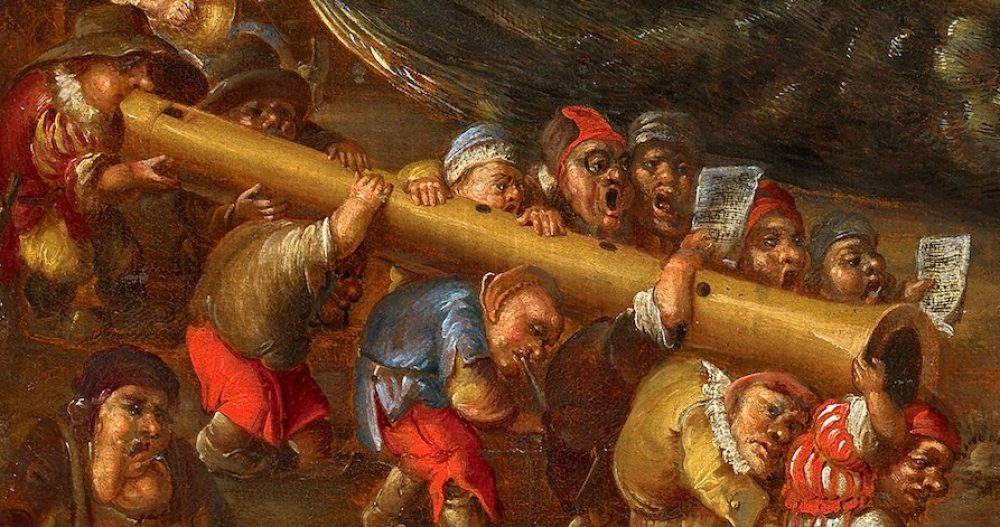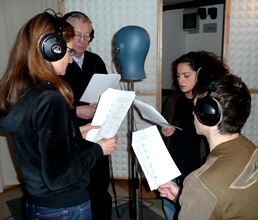When I began collecting material for this post last week, I had planned to focus on the Tibiades of François Chauvon, a little-known collection of elegant and slightly eccentric suites from early eighteenth-century Paris. Eight of these can be heard on a CD released last fall on Montréal’s early-music.com, a recording project of which I was delighted to be a part.
But to paraphrase John Lennon, life is what happens while you’re making other plans, and earlier this week my writing plans were unexpectedly altered by the sad news that my dear friend and colleague Washington McClain, a baroque oboist whom I knew for close to twenty years and with whom I played countless concerts of chamber and orchestral music, had died. He was one of North America’s busiest and most admired baroque oboists and taught at Indiana University. When he passed away suddenly last Sunday at the age of fifty-two, we all lost a radiant musical light.
So for now, I’ll write about Washington and our last musical collaboration, which by a bittersweet synchronicity was that recording of Chauvon.
Washington was a superlative musician. Elegantly expressive and adroit in technique, he had ‘ears’ so good I’m sure he could hear the grass grow. He was a paragon of integrity and professionalism, and he was also a mensch. Wash was serious and of strong opinion when he felt he needed to be, but he also had a smile that lit up the room and a deep sense of collegiality. I also loved him for his genuine, ongoing exploration of everything and anything that really brought the music off the page, especially with repertoire such as the Chauvon. He never got tired of wondering.

Photo by Colin Savage.
For a few sweltering days during a heat wave in July 2011, Wash and I gathered with bassoonist Michael McCraw, harpsichordist Charlotte Nediger and violinist Julia Wedman to rehearse and record eight of the twelve Tibiades. We were lucky to have found nearly a full week when everyone was available for the project. It’d been quite a while since all five of us had seen each other and we were happy to be reunited, so there was a little bit of magic afoot. The Ontario Arts Council had given the project some funding, and we’d secured the services of an excellent producer (Ivars Taurins) and ears-of-gold sound engineer (Ed Marshall). Our venue was Toronto’s St Thomas’s Anglican Church, an anglo-catholic oasis of calm despite its location half a block south of one of the busiest streets in the city.

That recording was hard work, mostly because of the oppressive heat. St. Thomas’s is a serene place with dark wooden rafters, terracotta tile floor and a paucity of large windows, but it got very hot and humid as the sessions progressed. ( You can’t leave the ceiling fans on, or leave the windows open during recording sessions like this, unless you think the sound of an idling truck or the barking of a Jack Russell terrier adds some extra élan to music from eighteenth-century Paris.) We consumed water by the jug, we toweled off repeatedly, we made ice packs to cool our feet (surprisingly effective!). There were a few more curses than usual about errant tuning, flabby strings and recalcitrant reeds, and some discussion about how much more clothing we could take off without offending anyone. But despite all that and the occasional self-recriminations we took turns having (“I remembered the repeat for the first four takes, why did I forget it now?!?”), we had a lot of fun exploring that music and were all very, very happy to have done so together.
We recorded for three days, creating a French Baroque sonic kaleidoscope by varying the number of players and instrumental colours for many of the suites. A prélude played by us all was followed by an allemande for the flute, violin and harpsichord, then a courante for the oboe with continuo, a gavotte for oboe and bassoon, an arpègement for solo harpsichord, and so on. Three of the suites were given the more standard treatment, one each for oboe, violin and recorder (with continuo). Here’s Wash with Michael and Charlotte, playing the Allemande from the Third Suite:
Allemande, la Dragonne – Suite 3
Still other movements got the tutti treatment with some spelling-off for variety’s sake, as in the Chaconne en rondeau from the Eleventh Suite:
Chaconne en rondeau, Suite 11
Chauvon: Les nouveaux bijoux came out last fall, and kind and favourable reviews have recently begun to appear. I’ve listened to the CD again several times this week just to hear Wash. Knowing I’ll never sit beside him again is heartbreaking, but his beautiful playing is there to enjoy as often as I wish. It was a joy and an inspiration to know and make music with him, and I’m beyond grateful that we made that CD.
Wash was also a good friend, affectionate, honest, thoughtful, funny, wise, and a great storyteller. People had to push pretty hard before he ceased giving them the benefit of the doubt. I can’t believe I will never have another of those long telephone conversations with him, or hear his laugh again. It seems inconceivable that our visits to the Ethiopian restaurant around the corner are over, and that he will never walk through our front door again. What a terrible loss. I miss him greatly and will remember him often, even if I should live to be a very old lady.

Don Giovanni, Japan 2000
http://www.early-music.com/music/chauvon-les-nouveaux-bijoux/






